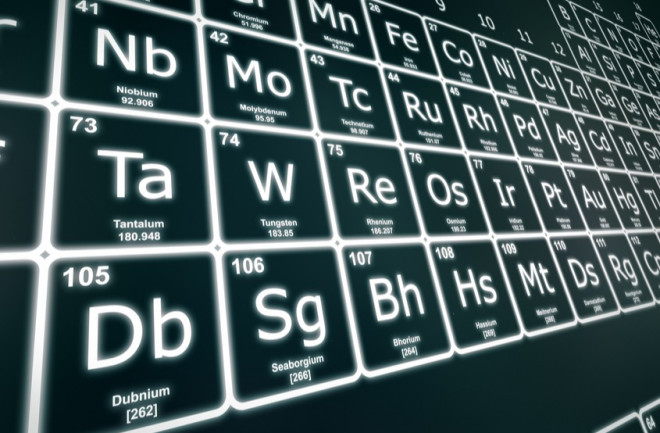The periodic table of elements is a cornerstone of modern chemistry, representing the organized arrangement of all known chemical elements.
Its iconic layout provides scientists with a systematic framework to understand the properties and relationships of these fundamental building blocks of matter.
The Periodic Table of Elements
You may remember the periodic table of the elements as a dreary chart on your classroom wall. If so, you never guessed its real purpose: It’s a giant cheat sheet. We have 10 things you didn’t know about the periodic table.
1. Who created the periodic table?
The table has served chemistry students since 1869 when it was created by Dmitri Mendeleev, a cranky professor at the University of St. Petersburg. With a publisher’s deadline looming, Mendeleev didn’t have time to describe all 63 then-known elements. Mendeleyev turned to a data set of atomic weights meticulously gathered by others.
2. What did Dmitri Mendeleev do?
Dmitri Mendeleev is best known for creating the periodic table. Fond of card games, he wrote the weight for each element on a separate index card and sorted them like in solitaire. Elements with similar properties formed a “suit” that he placed in columns ordered by ascending atomic weight.
3. How were atomic weights determined?
To determine those weights, scientists had passed currents through various solutions to break them up into their constituent atoms. Responding to a battery’s polarity, the atoms of various elements went in different directions. Atoms were collected in separate containers and then weighed. From this process, chemists determined relative weights — which were all Mendeleev needed to establish a useful ranking.
4. How was the periodic table of the elements arranged?
Now he had a new Periodic Law where “elements arranged according to the value of their atomic weights present a clear periodicity of properties,” and described one pattern for all 63 elements. Where Mendeleev’s table had blank spaces, he correctly predicted the weights and chemical behaviors of some missing elements — gallium, scandium and germanium.
5. Did Mendeleev’s periodic table miss anything?
When argon was discovered in 1894, it didn’t fit into any of Mendeleev’s columns, so he denied its existence — as he did for helium, neon, krypton, xenon and radon. In 1902, he acknowledged he had not anticipated the existence of these overlooked, incredibly unreactive elements — the noble gases — which now constitute the entire eighth group of the table.
Mendeleev wrongly assumed that all elements are unchanging. But radioactive atoms have unstable nuclei, meaning they can move around the chart. For example, uranium (element 92) gradually decays into a whole series of lighter elements, ending with lead (element 82).
6. How is the modern periodic table arranged?
Now we sort elements by their number of protons, or “atomic number,” which determines an atom’s configuration of oppositely charged electrons and hence its chemical properties.
Noble gases (far right on the periodic table) have closed shells of electrons, which is why they are nearly inert.
7. How are the elements formed?
Most elements in the periodic table were formed during the explosive deaths of massive stars in a process known as a supernova. These stellar explosions scatter newly formed elements into space, eventually forming the raw materials from which planets and life itself emerge.
8. How were the names of elements picked?
Several elements are named after famous scientists. For instance, curium is named in honor of Marie and Pierre Curie, pioneers in the field of radioactivity. Likewise, einsteinium pays tribute to Albert Einstein.
9. What is considered the most important element?
Carbon atoms — from Group 4 — bond in long chains, and voilà: sugars. The chemical flexibility of carbon is what makes it the key molecule of life.
10. What are the most recent elements discovered?
Since Mendeleev's time, scientists have discovered new elements, expanding the periodic table. The most recent additions include nihonium, moscovium, tennessine, and oganesson, which were officially recognized by the International Union of Pure and Applied Chemistry.
The periodic table serves as a fundamental framework for understanding the properties, trends and relationships of chemical elements. Its systematic organization has guided scientific research and exploration for over a century.
By exploring the periodic table, scientists gain insights into the behavior of elements, predict their chemical reactions and pave the way for new discoveries. Embracing the periodic table unlocks a world of knowledge that continues to shape our understanding of the universe.
Read More: Everything Worth Knowing About The Periodic Table
Article Sources:
Our writers at Discovermagazine.com use peer-reviewed studies and high-quality sources for our articles, and our editors review them for accuracy and trustworthiness. Review the sources used below for this article:
Britannica. Other scientific achievements of Dmitri Mendeleev
Britannica. Dmitri Mendeleev
Chemical Elements. Periodic Table: Noble Gases NASA. Periodic Table of the Elements: Origins of the Elements
International Union of Pure and Applied Chemistry. Periodic Table of Elements

